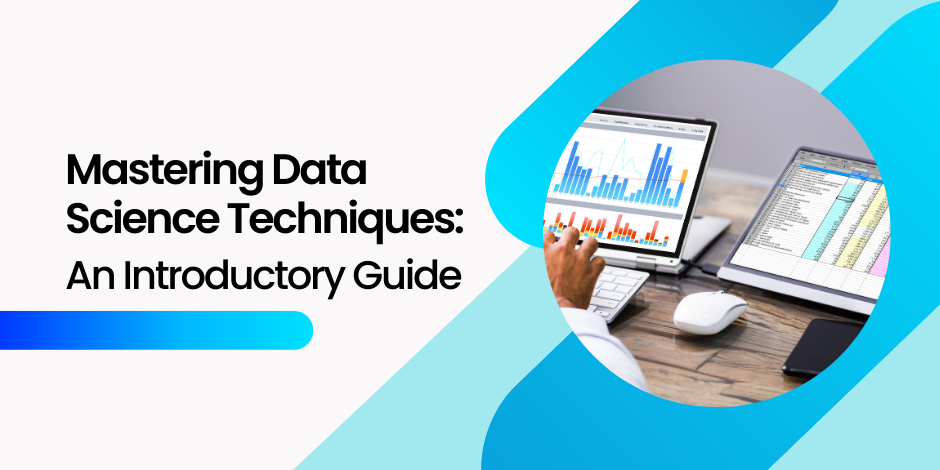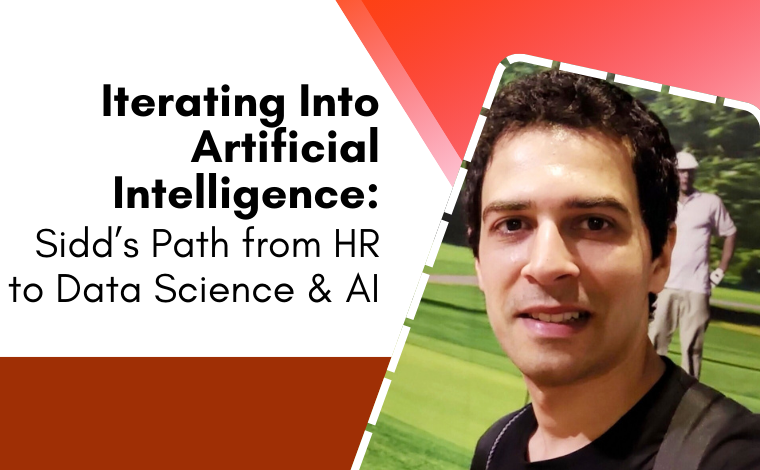Mastering Data Science Techniques: An Introductory Guide

Stay Informed With Our Weekly Newsletter
Receive crucial updates on the ever-evolving landscape of technology and innovation.
In the era of data proliferation, mastering data science techniques has become imperative for staying ahead in the competitive landscape.
This comprehensive guide aims to give you an in-depth understanding of the basics and the advanced techniques necessary to excel in data science.
What is data science?

Before we delve into data science techniques, let’s define what data science entails.
Data science is a multidisciplinary field that combines machine learning (ML), statistical analysis, and domain expertise to extract meaningful insights and knowledge from complex and large datasets.
It involves using various techniques to collect, clean, analyse, and interpret data to make data-driven decisions.
What is data science?
Data science encompasses various methodologies and techniques, including statistical analysis, machine learning, data visualisation, and predictive modelling.
Data scientists employ their expertise to solve real-world problems using data-driven approaches and help businesses gain a competitive edge.
The importance of data science in today’s world
In the era of big data, data science has emerged as a critical enabler for organisations across industries.
Skilled data scientists can optimise the power of data and transform it into actionable insights.
Data science techniques enable organisations to identify patterns, trends, and correlations within the data, which in turn helps inform decision-making processes, optimise operations, and drive innovation.
Data science is crucial in various sectors, including healthcare, finance, marketing, and cybersecurity.
Moreover, data science is transforming the field of marketing.
By analysing customer data, organisations can gain insights into consumer behaviour, preferences, and purchasing patterns.
This enables them to tailor marketing campaigns, improve customer engagement, and drive sales growth.
Lastly, data science is vital in cybersecurity. With increasing cyber threats, organisations need data scientists to analyse network traffic, detect anomalies, and develop robust security measures.
Delving into data science techniques

Understanding and mastering data science techniques is crucial for effective data analysis and deriving meaningful insights.
Data collection and preparation
Data collection is the first step in the data science process.
It involves gathering raw data from various sources, such as databases, APIs, or online platforms.
Once the data is collected, it must be cleaned and preprocessed to ensure its quality and reliability.
This includes handling missing data, removing outliers, and repurposing the data into a suitable format for analysis.
Data preparation goes hand in hand with data collection. It involves transforming, aggregating, and manipulating the data to make it suitable for analysis.
This may include feature engineering, data normalisation, and data integration. A well-prepared dataset lays the foundation for accurate and meaningful analysis.
Data analysis and interpretation
Data analysis is at the heart of data science. It involves applying statistical techniques and ML algorithms to extract patterns and insights from the data.
This can range from performing simple descriptive statistics to advanced predictive modelling.
Data analysis techniques help uncover relationships, identify trends, and make predictions based on the available data.
Once the analysis is complete, interpreting the results becomes crucial. It requires domain expertise and an in-depth understanding of the context in which the data was collected.
Effective interpretation of the analysis results enables data scientists to derive actionable insights and make informed recommendations.
Data Science Techniques and Data visualisation
Data visualisation presents data visually through graphs, charts, and other graphical representations.
It enhances understanding complex datasets, making identifying patterns, trends, and outliers easier.
Effective data visualisation techniques enable data scientists to communicate their findings and insights clearly and concisely, facilitating better decision-making.
Various tools and libraries for data visualisation are available, such as Python’s Matplotlib, R’s ggplot, and Tableau.
Depending on the data’s type and nature, different visualisation techniques can be employed, including bar charts, scatter plots, histograms, and heatmaps.
Advanced data science techniques
Building on the foundational techniques, advanced data science techniques take data analysis to the next level.
These data science techniques leverage the power of ML, predictive modelling, and big data to tackle complex problems and make accurate predictions.
ML in data science
ML enables systems to learn from data without being explicitly programmed.
It involves developing algorithms that automatically interpret patterns and make predictions based on the available data.
ML techniques are widely used in data science for tasks such as regression, classification, clustering, and recommendation systems.
Predictive modelling and algorithms
Predictive modelling is used to predict future outcomes based on historical data.
It involves developing mathematical models that capture the relationship between the input and target variables.
Predictive models can be trained on historical data to make accurate predictions about new, unseen data.
Common algorithms used in predictive modelling include random forests, linear regression, decision trees, and neural networks.
Big data and data mining
With the exponential growth of data, traditional data analysis techniques often need to catch up in handling large and complex datasets.
This has led to the emergence of big data technologies and data mining techniques. Big data refers to datasets that are too large and complex to be processed using traditional data processing systems.
Conversely, data mining involves using algorithms and techniques to discover patterns and extract knowledge from large datasets.
Data Science Techniques: Tools and software for data scientists

While data science involves a combination of programming, statistics, and domain expertise, several tools and software can aid in the process.
Introduction to Python for data science
Python is a popular programming language for data science.
It offers libraries and frameworks, such as Pandas, NumPy, and Scikit-learn, that provide powerful data manipulation, analysis, and machine learning tools.
Python’s simplicity, readability, and versatility make it an ideal choice for data scientists of all skill levels.
R programming in data science
R is an open-source language and software environment for statistical computing and graphics.
It provides a comprehensive set of tools for data manipulation, statistical analysis, and data visualisation.
R’s extensive library ecosystem, including packages like dplyr, ggplot2, and caret, makes it a popular choice among statisticians and data scientists.
SQL for data management
Structured query language (SQL) is used for managing and manipulating relational databases.
It provides a standardised way to interact with databases, perform queries, and manipulate data.
SQL is a fundamental skill for data scientists, enabling efficient data retrieval, aggregation, and transformation.
Conclusion
In conclusion, mastering data science techniques is essential for leveraging the power of data and deriving meaningful insights.
By applying these techniques and harnessing the power of data, you will be well-equipped to solve complex problems, make informed decisions, and drive innovation in the ever-evolving field of data science.
Are you ready for a career in data science? The Institute of Data’s Data Science & AI programme offers flexible learning, industry-experienced instructors and a focus on real-world applications.
Elevate your career with the resources and support you’ll need in today’s ever-evolving field of tech.
Ready to learn more about our programmes? Contact our local team for a free career consultation.




